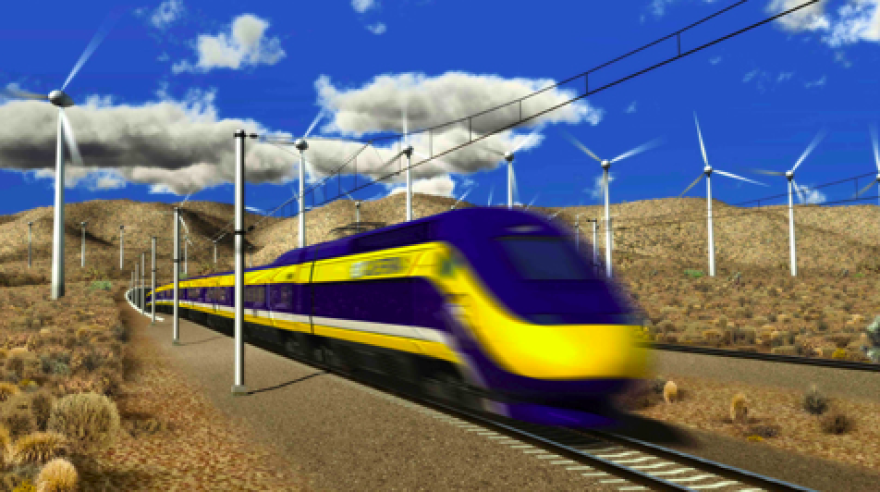While BART managers are trying to bring the Bay Area’s rail system into the future, state officials are trying to bring a new train system into existence. High-speed rail is supposed to whisk passengers from San Francisco to Los Angeles in just two and a half hours. It’s a controversial project, though, and over the past few months it’s gotten even more controversial. KALW’s transportation reporter Julie Caine has more.
HOLLY KERNAN: Julie, we know the price tag for high-speed rail has now gone up to an estimated $100 billion. What is happening?
JULIE CAINE: Right, it’s three times more than the original price tag voters approved back in 2008. Last week legislative analyst Farra Bracht released a pretty scathing report. She said the sources of funding in the draft are “highly speculative.” Basically, what’s happening is materials cost a lot more than they did a few years ago and the engineering plans have really changed. Basically it’s in response to having to choose between building the tracks through communities and farmland, or bypassing them and building this extensive system of bridges and viaducts.
The other thing that’s going on is the timeline has changed. It’s now expected to be done in 2034, which is 14 years later than they originally expected. Not everyone thinks that new timeline is correct. This project has received a lot of criticism from Sacramento over the past year. Daniel Krause is the executive director of Californians for High Speed Rail, who’s a supporter of the project, and he talked with KPCC public radio in Los Angles about the effects of all that criticism.
DANIEL KRAUSE: We're concerned that the skeptics up in the state legislature have essentially browbeaten them into being so conservative that they're blowing the number up to a much higher level than we were anticipating.
KERNAN: So Julie, the price tag for this thing keeps going up – it’s estimated at maybe $100 billion at this point. How much does the state have for it?
CAINE: Well, right now the state has $6 billion. And that’s a combination of money from the feds and from the state. The money from the feds has some stings attached, which means that the construction has to be in the Central Valley, and it has to start next year. And it only is 130 miles of track that doesn’t connect to any major metropolitan areas. So, a lot of people call that the “train to nowhere.”
KERNAN: So even if it is this “train to nowhere”– let’s say it got built. I still don’t understand how you’re going to go from $6 billion that you may have in hand to a $100 billion project.
CAINE: Well, that’s right. That’s the $92.5 billion question! The thing about the federal money is that the state really wants to spend it, because it’s being offered. So they are saying that they should go ahead and build that track in the Central Valley anyway, that Amtrak could use it to improve service. But the problem is the money from the state also has strings attached, that that has to be for high-speed rail, and high-speed rail isn’t going to run on that 130 miles of track. And so it might actually be illegal to start construction in the Central Valley. It’s a catch-22.
KERNAN: And that’s what the California Legislative Analyst’s Office seems to be saying in this new report. Let’s hear from Farrah Bracht of the California Legislative Analyst’s Office.
FARRAH BRACHT: It appears doubtful that there will be any additional federal support anytime soon. This makes it increasingly likely that the ICS is all that will ever be built. The High Speed Rail Authority has not demonstrated that the benefits of this independent segment have independent operational utility that exceeds the cost of this segment.
KERNAN: So Julie, what is in the future for California’s high-speed rail? Will this get built? What’s happening?
CAINE: I don’t think anybody really knows the answer to that question. Congress just zeroed out federal funding for high-speed rail for the next year, so doesn’t look like there’s more money coming from the feds. This business plan really has Jerry Brown’s support behind it. It’s in a public comment period right now until December 31, and then it goes back to the legislature in January. So, if people want to leave comments, they can do that on the CaliforniaHighSpeedRailAuthoritywebsite, otherwise we just have to wait and see what happens in January.






